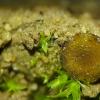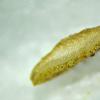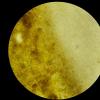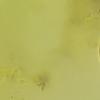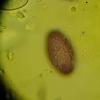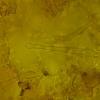
20-12-2025 23:08
Patrice TANCHAUDBonsoir, récolte sur sol sablonneux dans l'arri�

20-12-2025 15:47
Mirek GrycHi.These grew on pine wood that was heavily covere

18-12-2025 21:17
Pol DebaenstThe identification took me to Byssonectria deformi

15-12-2025 07:09
 Danny Newman
Danny Newman
indet. Rutstroemiaceae sp. on unk. fallen leavesMc

19-12-2025 10:10
Patrice TANCHAUDBonjour, récolte réalisée en milieu dunaire, a

18-12-2025 17:23
 Bruno Coué
Bruno Coué
Bonjour,je serais heureux d'avoir votre avis sur c

18-12-2025 18:07
Margot en Geert VullingsThese plumes were found on rotten wood.They strong

17-12-2025 18:35
 Michel Hairaud
Michel Hairaud
Bonjour à tous/Hi to everyone I am passing along
 Holland, 07-09-2019. In riverclay area on soil (old piece of riverbank). Apothecium yellowish/greenish, darkening into brown when older, largest 2,5-3 mm. Asci clavate, 155-190 x 18-20, no Meltzer reaction (J-).
Holland, 07-09-2019. In riverclay area on soil (old piece of riverbank). Apothecium yellowish/greenish, darkening into brown when older, largest 2,5-3 mm. Asci clavate, 155-190 x 18-20, no Meltzer reaction (J-).Spores mature deep purple, young hyaline. I think I saw very fine granulation in the young spores, as well as fine warts. Mature spores with fissures/reticulated, 19-21 x 10-13.
Paraphyses slender, longer than the asci, yellow(ish). Septated, sometimes forked, with a slightly swollen top (not all of them).
Following van Brummelen I came to Ascobolus geophilus, but maybe I'm very wrong :)
What is your opinion? Thanks in advance!

Interesting! It is sometimes difficult to separate certain species of this genus. Compares with A.behnitziensis near geophilus. According to Dissing, geophilus spores are later adorned ornamented, unlike behnitziensis. Also try to make other preparations in the Melzer showing the asci; you say negative Melzer whereas normally the reaction must be positive.
Michel.

van Brummelen states that only very young asci are amyloid in A. behnitziensis - i.e., the blueing might be visible only in lower part of the hymenium, see here: https://www.nahuby.sk/obrazok_detail.php?obrazok_id=606132
Cheers,
Viktorie

Michel, what I read in van Brummelen about geophilus:
Asci cylindric-clavate, tapering
downwards, rounded above, 160-200 X 17- 20 p. (according to Seaver rgr6, I.e.:
"200-250 X 15- 18 p,"), 8-spored; the wall not, or scarcely, blue in Melzer's reagent.
So I am now a bit confused?



